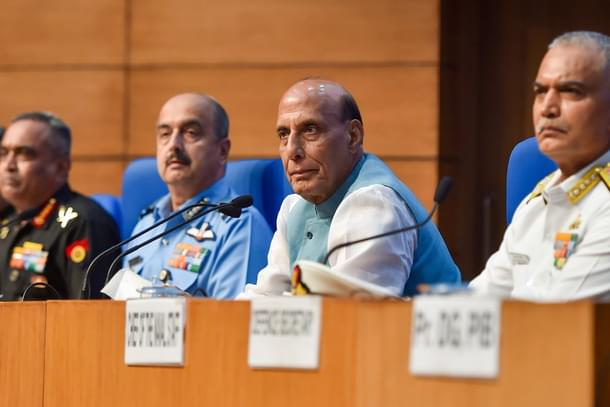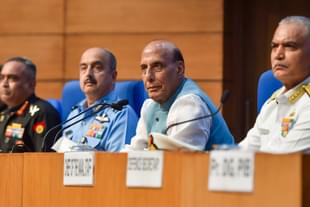Defence
Path Clears For Creation Of Joint Theatre Commands As All Three Services Agree To CDS's Proposed Plan
Ujjwal Shrotryia
Jun 29, 2023, 04:05 PM | Updated 04:11 PM IST
Save & read from anywhere!
Bookmark stories for easy access on any device or the Swarajya app.


Clearing the path for creation of joint theatre commands, all the three services, viz the Army, Air Force and the Navy have agreed to the new structures proposed by the Chief of Defence Staff (CDS) Anil Chauhan, reported The Print.
The new structure envisages the creation of three theatre commands.
Two land-based commands will be adversary specific, each centered around China or Pakistan, while the third theatre command will be maritime specific, primarily responsible for handling the Indian Ocean Region.
These three commands will be commanded by four-star officers, making them equivalent in rank to the Chiefs of Army, Navy and Air Force, with the Chief of Defence Staff (CDS) commanding all six.
Earlier, it was thought that the theatre commanders will be three-star officers (Lt Generals, Vice Admirals and Air Marshals), raising seniority concerns between the service chiefs and theatre commanders.
However, there some concerns still remaining which according to a source are "more administrative than operational" adding that "One per cent is still out there but this is a work in progress. It will take some more time".
In addition to addressing these concerns, there have been further developments in the plan for the theatre commands.
It has been decided to create more commands like cyber, space, intelligence, missiles, drones and additional logistics commands.
This will ensure that there are no loss of jobs for three-star (Lt Generals), two-star (Maj Generals) and one-star (Brigadiers) officers, after the theatre commands are created.
The IAF also had some reservations about the old structures of the joint theatre commands which talked about the division of fighter assets between each of the theatre command.
It was deemed operationally unwise to divide the limited air assets, especially considering that the force currently has just 31 fighter squadrons, despite being authorised for 42.
Another proposal — creation of an Air Defence Command (ADC) has also been discarded following strong arguments from the Indian Air Force (IAF).
The IAF emphasized that a standalone ADC would be counterproductive since "air defence" and "offensive air" missions were interdependent and could not be carried out in isolation during conflicts.
The proposal for the creation of National Defence University (NDU) will also be revived.
The NDU will be tasked to prepare doctrines, concepts, and theories for the new theatre commands.
Additionally, apart from the junior officers of Major and Lieutenant Colonel rank, senior officers of Major Generals and Brigadiers and equivalent will also be cross posted within services.
Previously, senior military officers were assigned to tri-service organisations, but inter-service postings were not typically carried out.
The decision to cross-post officers aligns with the objective of integrating the three services and establishing theatre commands.
The recent move to implement common Annual Confidential Reports (ACRs) for two and three-star officers is also a step towards facilitating cross-services postings. Common ACRs for senior military officers will aid in enhancing collaboration and integration among the three services.
According to insiders, inter-service batch parity will be the primary factor governing the cross-service postings of senior officers.
Overall, all these steps indicate that a structure for the theatre commands has been decided, and India will soon get its theatre commands.
Staff Writer at Swarajya. Writes on Indian Military and Defence.





